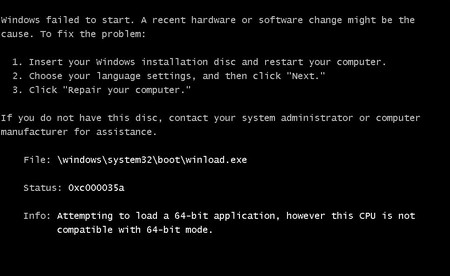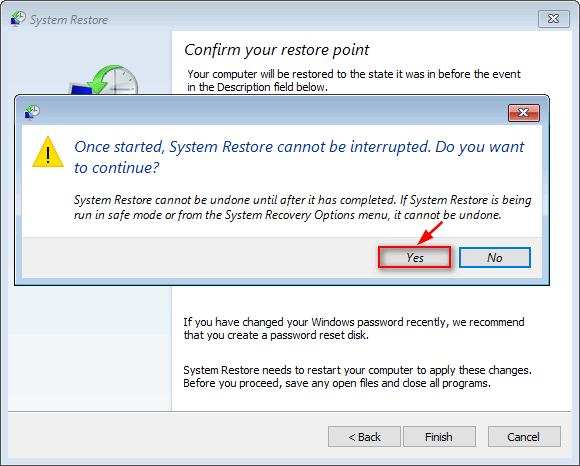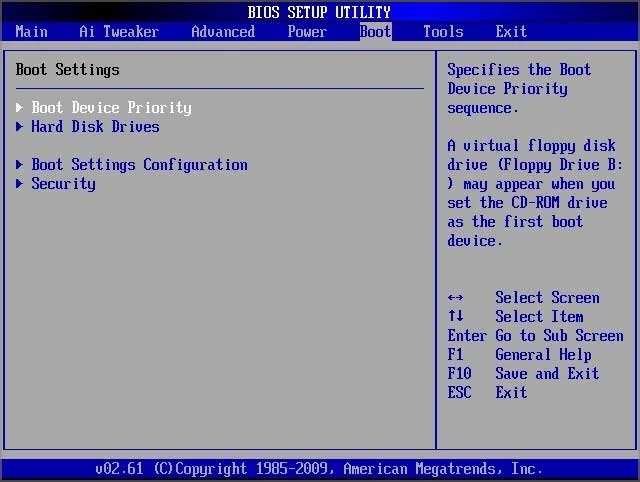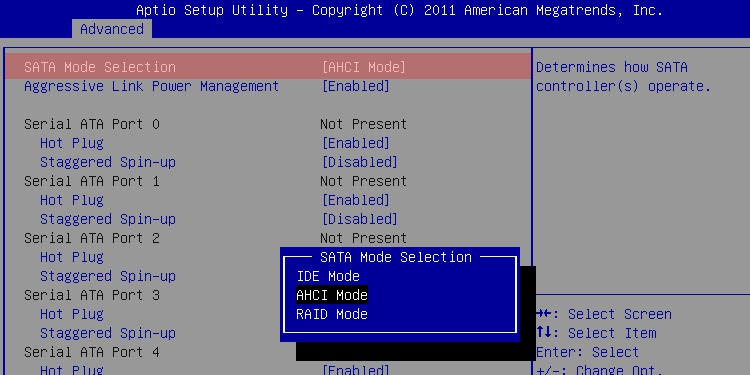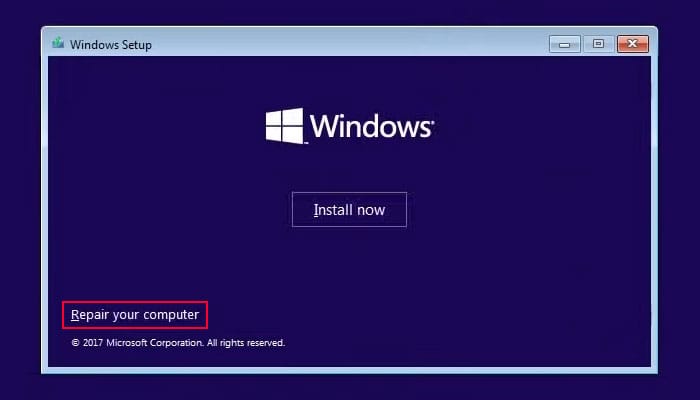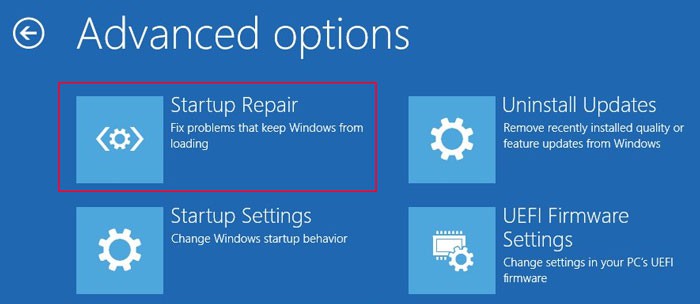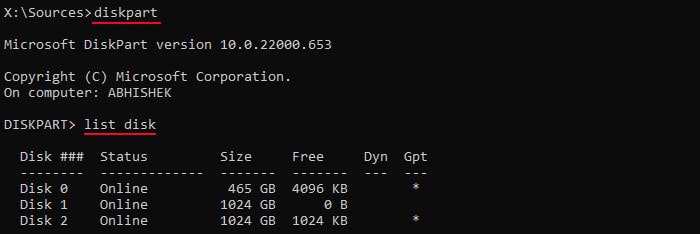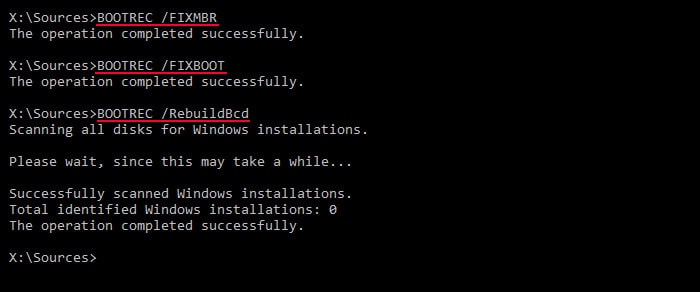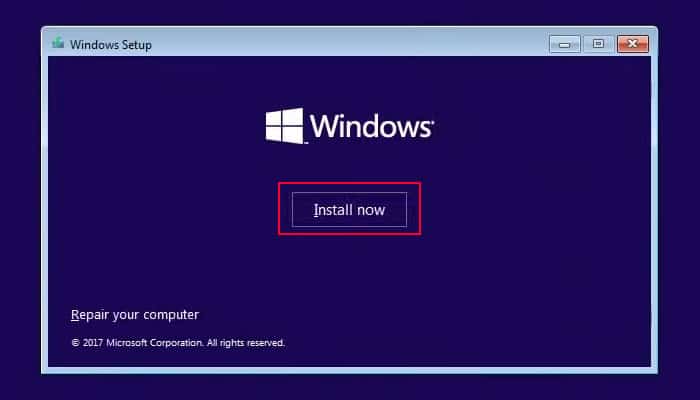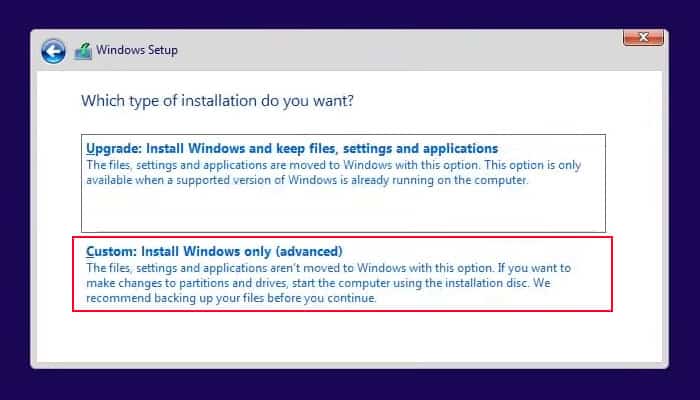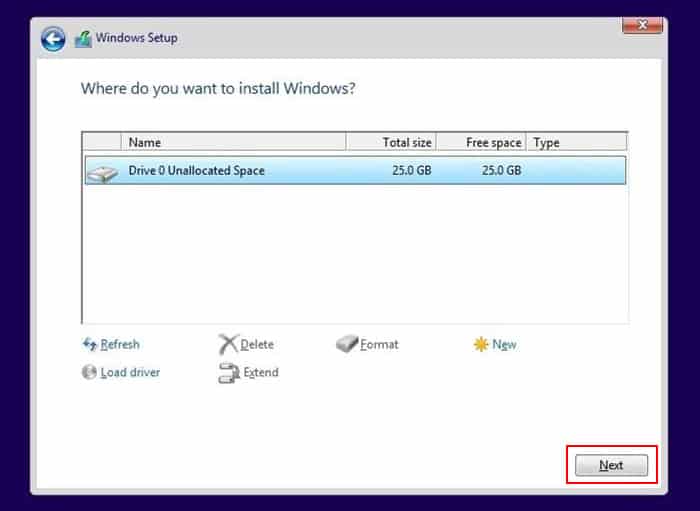Windows может перестать работать, фактически, не запуститься из-за любых изменений оборудования и программного обеспечения. Эти изменения мешают обычному процессу загрузки. В этом посте мы постараемся решить проблему с помощью советов по устранению неполадок.

Windows failed to start a recent — ошибка загрузки
Обычно проблема связана с отсутствующим загрузчиком или подключенным оборудованием. Вам нужно будет сделать загрузочный USB-накопитель для загрузки в режиме расширенного восстановления. Поскольку вы не можете получить доступ к своему компьютеру, вы можете использовать другой компьютер с Windows 10 для создания загрузочного диска.
У вас есть следующие варианты:
- Проверить оборудование
- Восстановление системы
- Восстановить BCD
- Установите правильный порядок загрузки
Вам также понадобится учетная запись администратора в одном из процессов, поэтому обязательно запомните это.
1] Установите правильный порядок загрузки

При запуске Windows загрузчик ищет набор файлов, откуда он может начать загрузку Windows. Если он не найдет нужные файлы, Windows не загрузится. Вы должны убедиться, что загрузочным диском по умолчанию является ваш SSD или HDD.
Если он не установлен по умолчанию и у вас подключен USB-накопитель, Windows зависнет. Поэтому загрузитесь в BIOS с помощью клавиши DEL или F2 при включении компьютера и измените порядок, Как изменить порядок загрузки.
2] Проверить оборудование
Если проблемы с порядком загрузки нет, вы можете проверить, есть ли проблема с жестким диском. Первым делом вам следует проверить, может ли BIOS его обнаружить. Если это так, то вам нужно проверить это на другом компьютере. Если жесткий диск или твердотельный накопитель не удается распознать, у вас проблема с оборудованием.
Если вы столкнулись с этим на ноутбуке, вам нужно вручную вынуть его и проверить. Если это аннулирует вашу гарантию. пожалуйста, отнесите его в сервисный центр, и не открывайте его самостоятельно.
3] Автоматическое восстановление при Загрузке

Windows Advanced Recovery предлагает функцию автоматического восстановления (восстановление при загрузке), которая сканирует системные файлы, параметры реестра, параметры конфигурации и многое другое и пытается решить проблему самостоятельно, автоматически. Обычно он запускается автоматически, если процесс перезагрузки прерывается несколько раз.
Вы можете использовать загрузочный USB-накопитель для загрузки в Recovery.
Вам нужно будет выбрать Устранение неполадок> Дополнительные параметры> Автоматическое восстановление. При появлении запроса введите данные учетной записи и позвольте процессу выполнить свою работу.
4] Восстановить BCD

BCD или данные конфигурации загрузки содержат информацию, которая позволяет загрузчику находить нужные файлы для загрузки Windows. Если BCD поврежден или не содержит информации, Windows зависает. Выполните следующие действия, чтобы восстановить BCD:
- Загрузите компьютер в расширенный режим восстановления
- Запустить командную строку, доступную в разделе «Дополнительные параметры».
- Чтобы восстановить BCD или файл данных конфигурации загрузки, используйте команду –bootrec /rebuildbcd
- Он просканирует систему и позволит вам выбрать ОС, которые вы хотите добавить в BCD.
Если он не находит загрузочный раздел, вы можете использовать bootrec /scanos, чтобы найти список раздела, на котором установлена ОС. Затем используйте команду bcdboot, чтобы добавить его в список. После того, как путь установлен, перезагрузите компьютер, и ошибка больше не должна возникать.
Вы также можете попробовать исправить MBR или основную загрузочную запись, выполнив команды в командной строке bootrec/fixMbr and bootrec /fixboot.
Компьютер частенько подкидывает пользователю массу всевозможных проблем. И проблемы эти постоянно разные: то выключение в самом начале старта, то постоянная перезагрузка системы, то пятое, то десятое.
Но довольно часто пользователь сталкивается с проблемами после того, как он почистит компьютер от пыли.
В ТЕМУ: Система запускается со второго раза – как решить проблему?
Вот об этом и поговорим.
Итак – ошибка (0xc000000f).
системные проблемы при загрузке Windows – ошибка 0xc000000f
Вы решили почистить компьютер от пыли? Отличная мысль: это только ускорит его работу! И вот вы почистилисистемный блок, запустили систему и – опа! – вместо полноценной загрузки ОС вы получаете черный экран, на котором, на английском языке, описана системная ошибка.
То бишь, в верхней части экрана будет надпись “Windows Boot Manager”, чуть ниже идет текст, который начинается с “Windows failed to start. Arecent hardware of…”, далее идет алгоритм предлагаемых действий. Но сам номер ошибки вы можете увидеть в пункте “Status: 0xc000000f”.
И ниже идет приписка “Info: The Boot Configuration Dataforyour PCismissingorcontains errors”. В общем, так. Естественно, вы пытаетесь перезапустить систему, но проблема повторяется снова и снова.
В ТЕМУ: Что делать, если компьютер не включается?
Скажем сразу: вы можете миллион раз перезапускать систему, менять батарейку на материнской плате, менять память и тд и тп, но проблема не решается таким способом!
Вся беда в том, что компьютер подвержен синдрому спонтанных сбоев даже в настройках BIOS! И решение данной ошибки кроется именно там.
Переходим к решению ошибки 0xc000000f.
1. Перезапустите систему (нажмите на кнопку “Reset” на передней панели системного блока) и сразу начинайте нажимать клавишу “F1″ (или “Del”, “F2″, в общем ту клавишу, которая прописана в вашей системе для входа в BIOS).
В ТЕМУ: Системная утилита “Монитор стабильности системы” – отличный инструмент Windows 7, который поможет решить многие проблемы
2. Попав в BIOS, переходим в настройки BOOT (там видно, как и что называется).
Находим пункт Hard Disk Drivers, выбираем и открываем его. Вы увидите две строчки: 1stDrive и 2ndDrive. И вот тут и скрывается проблема. Как правило, может быть прописано так: 1stDrive [SATA: 3M-STM3500418], а 2nd Drive [SATA:3M-STM3500418].
Дело в том, что при возникновении ошибки 0xc000000f, у вас, скорее всего, просто слетела правильность настройки устройств, с которых система загружает Windows.
Не поняли? Ну, тогда проще. Если ваша ОС (системная папка Windows со всем “фаршем”) установлена на диске “C”, то ни с какого другого диска она загрузится не сможет! Опять не понятно? В общем, так!
3. Выделяете строку 1st [SATA: 3M-STM3500418], нажимаете на кнопку “Ввод” (Enter). Откроется такое маленькое окошко, в котором вы увидите следующее: SATA: 3M-STM3500418 и SATA: 4S-WDC WD20EARX-00PASB0.
4. Стрелочками выделяете строчку SATA: 4S-WDC WD20EARX-00PASB0, жмете “Ввод” и получаете итог: 1st SATA: 4S-WDC WD20EA.
Это именно то, что вам и необходимо!
5. Теперь нажмите на клавишу “F10″: так вы сохраняете только что сделанные изменения. Компьютер перезагрузится и теперь операционная система загрузится без проблем: ошибка 0xc000000f устранена!
В ТЕМУ: Что делать, если не подключается Интернет?
Удачи!
Кстати, а вот как создается в Одноклассники моя страница!
-
Home
-
News
- Windows Boot Manager Failed To Start In Windows 10
By Sarah |
Last Updated
The Windows boot manager is actually a piece of small software that helps you load your system. It is part of the volume boot record, which is responsible for the boot process. If any problems are found on the Windows boot manager, you won’t be able to access your system or disk data. In this case, you need to find solutions to fix the error.
Windows boot manager, also called BOOTMGR, is located in the root directory and responsible for starting a system & interacting with users. The BOOTMGR configuration data is located in the Boot Configuration Data (BCD) store, which is a database similar to registry; it is used in new Windows system to replace the boot.ini file used in some old Windows like Windows XP.
Stay Calm When Windows Boot Manager Failed
When you find the Windows boot manager failed, please don’t panic. You should try the methods that will be introduced in the next part to fix the Windows boot manager error. To prevent the possible data loss resulted from the boot failure, you should go to the home page to get reliable data recovery software and backup program.
Error: Inaccessible Boot Device, How To Fix It Yourself?
Windows Boot Manager Failed to Start
The error message Windows Boot Manager boot failed sometimes appear on your computer screen during startup process. The most possible cause of this error is a damaged or corrupted Master Boot Record. You can press F8 to boot into Windows Recovery Menu or perform a System Restore to fix the Boot Manager failure.
Definitely, you are not able to enter your system when Windows Boot Manager is failed. You’ll probably see the following errors on the screen:
- 0xc00000f
- 0xc00000e
- 0xc00000d
- 0xc00000e9
- …
What are the possible causes for a failed Windows boot manager?
- The file integrity is damaged.
- The HDD data cable is not working.
- The BCD file is missed or corrupted due to disk write errors, power outages or boot sector viruses. (How to recover files lost by virus attack?)
In fact, the root reason is a corrupted Master Boot Record (MBR). What’s more important is how to fix when you find Windows boot manager not working.
How to Fix Windows Boot Manager Boot Failed
This part will show you how to fix Windows boot manager in Windows 10.
Solution 1: Make Use of Bootrec.exe Tool
- Restart your system and press F8 to see the Windows Recovery Menu.
- Select Troubleshoot.
- Select Advanced options.
- Select Command Prompt. (How to recover files using CMD?)
- Type bootrec /RebuildBcd command and press Enter.
- Type bootrec /fixMbr and press Enter.
- Type bootrec /fixboot and press Enter.
- Type bootsect /nt60 SYS (or bootsect /nt60 ALL) and press Enter.
- Wait for the commands to complete.
You can also use the Rebuild MBR function in the bootable version of MiniTool Partition Wizard to try to fix the Windows boot manager error caused by damaged MBR.
Solution 2: Perform a System Restore
- Restart your computer and boot from the Windows installation disk.
- Choose to change language & other settings in Windows Setup or not; then, click Next.
- Click Repair your computer.
- Select Troubleshoot > Advanced options > System Restore.
- Choose the target operating system.
- Click Next in the System Restore wizard.
- Select the proper restore point and click Next.
- Confirm your selection and click Finish.
- Click Yes in the prompt window to confirm system restore.
- Wait for the restore to complete.
- Restart your PC.
In addition, you can also try to fix Windows boot manager failed to start by removing newly installed hardware & external devices and then reboot.
Verdict
The Windows boot manager file is very essential for the PC startup, so it is protected by the system (hidden and read-only). It is actually located in the root directory of the active partition. In most PCs, it has a System Reserved label. When it is damaged, you won’t be able to boot into the system. You must follow the solutions given above to try to troubleshoot Windows boot manager failed issue.
About The Author
Position: Columnist
Sarah has been working as an editor at MiniTool since she graduated from university. Sarah aims at helping users with their computer problems such as disk errors and data loss. She feels a sense of accomplishment to see that users get their issues fixed relying on her articles. Besides, she likes to make friends and listen to music after work.
If you have enabled Windows Boot Manager or use an older Operating System where the UEFI bootloader is not available, you will encounter the error message: “Windows failed to start. A recent hardware or software change might be the cause.” It appears when the Boot Manager can’t access the boot device.
It will also display a possible cause, such as, “A required device isn’t connected or can’t be accessed.” This issue mainly happens because of the corruption of the boot files necessary to start the OS. But it is also possible that the necessary boot device is not connected properly.
Table of Contents
Remove External Devices
Depending on your Boot priority order, your system may be trying to boot from another media, such as a USB or a network device. So, before trying other possible solutions, try removing all unnecessary external devices.
This way, only the normal OS storage device or installation media is available as the current boot device.
Check BIOS Settings
Before you begin repairing the potentially corrupt boot files, you need to ensure that your computer is detecting the OS drive and interfacing with it properly. Also, you need to check the boot order list to make sure that the OS drive is the first priority.
- Start your computer and press the BIOS key immediately after you see the logo to get to BIOS.
- Go to Boot or a similar tab and select something like Boot Priority.
- Make sure your OS drive (generally C Drive) is at the top of the list. If the drive does not show up, it is not connected properly, and you need to reinsert it in this scenario.
- If you are trying to boot from a Windows installation media, you have to move the media to the top instead.
- Now, look for the SATA mode option. You can usually find it under Advanced or Storage Controller settings.
- If you are using older operating systems, IDE is the preferred choice. And for newer systems, set it to AHCI. We recommend checking if the computer boots when enabling each option to ensure what mode you need.
- If you still encounter the error regardless of the mode, set the SATA mode to AHCI for now if you are using Windows Vista and later OS. After trying other methods, you can switch the SATA mode and check which works best for you.
Perform Startup Repair Using Windows Installation Media
Windows includes the Startup Repair feature that automatically checks for errors with the boot configuration data or other boot files and attempts to repair them. You will get an option to perform the startup repair whenever you encounter the error.
However, if it can’t solve it, the source file for the repair may have some issues as well. In such cases, you need to use an installation media to use it as the source.
- Create a Windows installation media with the same version as your system on another computer.
- Boot using this installation media. If you have an MBR disk, you need to manually change the Boot order from the BIOS to prioritize the installation media.
For a GPT disk or UEFI system, you should get the choice to boot from the media. Or you may need to press a certain key to access the boot menu. Search official sources for such a key for your motherboard. - Set the language preferences and agree with any license terms.
- Then, on the installation screen, click on Repair your computer.
- On newer Windows OS, go to Troubleshoot > Advanced options > Startup Repair. For older ones, you can directly select Startup Repair.
- Follow the on-screen instructions to finish the repair and then boot again.
- This time, boot using your original OS drive and then check if you still encounter the error.
Manually Repair Boot Files
Sometimes, the automatic startup repair utility can’t repair the boot files. In such cases, you need to manually repair them using the Command Prompt.
- Boot using the proper Windows installation media (see above solution).
- Specify your language preferences and click Next.
- On the Install screen, click Repair your computer.
- Select Command Prompt or Troubleshoot > Advanced options > Command Prompt.
- Type the two commands below to check if you have a GPT partition system in your OS disk and press Enter after each:
diskpartlist disk(here, the Gpt column should show an asterisk (*) sign if you have a GPT partition on the disk)
- Enter the commands below depending on the partition scheme of your system disk:
For GPT,
For MBR,
exit(to exit out of diskpart)bootrec /fixmbrbootrec /fixbootbootrec /rebuildbcd
Re-create Boot Files
If the boot configuration and file repairing commands don’t work, you must recreate these files from scratch using your operating system files.
- Boot using the proper Windows installation media and go to the Command Prompt (see above method).
- Type the two commands below to check if you have a GPT partition system in your OS disk and press Enter after each:
diskpartlist disk(here, the Gpt column should show an asterisk (*) sign if you have a GPT partition on the disk)
- Enter the commands below depending on the partition scheme of your system disk:
For GPT,
select disk #(replace # with the relevant disk number)list volume(check the number of the volume with the FAT32 partition that is hidden)select volume #assign letter = S:(or any unused drive letter)exitcd /d S:\EFI\Microsoft\Boot\(replace S: with the drive letter you used earlier)ren BCD BCD.old(to create a backup to account for unforeseen situations)bcdboot C:\Windows /l en-us /s S: /f all(here, replace C: with the drive letter of the operating system and S: with the letter you assigned earlier.)bootrec /rebuildbcd(not necessary if you have a Windows version before Windows 10 Version 1709)
For MBR,
select disk #(replace # with the required disk number)list volume(check the number of the volume with where Info says System)select volume #assign letter = S:(or any unused drive letter)exitbootrec /fixmbrbcdboot C:\Windows /s S:(here, replace C: with the drive letter of the operating system and S: with the letter you assigned earlier.)
Clean Install Windows
If you cannot boot into your operating system after repairing the boot files, your final option is to clean install Windows. A clean install removes the partition containing the boot files as well as the OS partition. This way, you can reinstall all such files (but without corruption) to resolve your issue.
Clean installing Windows will delete all the data on the disk (of your non-system drives as well). So, first, try backing the data on the disk by booting with a Linux live disk or Windows-to-go disk.
- Create a Windows installation media of the version you want (using the same as the Windows in your disk is not necessary).
- Boot using this media and specify your language preferences.
- Click on Install now on the Install screen.
- Enter your product key if you have it. If not, select I don’t have a product key as well as the Windows build you want (Home, Pro, etc.)
- Click on Next.
- Agree with the license agreements and select Next.
- Choose Custom: Install Windows only.
- Select all the partitions for your OS disk (Drive 0) and click Delete for each. Confirm your choice as well.
- After you only have the unallocated space for the disk, select it and click Next.
- Ignore the warning as the setup process will automatically create the necessary partitions.
- Click on the partition that says Primary and then Next.
- Follow the on-screen instructions to clean install Windows.
- After restarting, check if you can boot from the OS drive. Then, you will need to go through the initial account and privacy setup.
Use USB 2.0 Port to Install Older Windows
All computers that already have Windows 10+ may not support installing old OS like Windows 7 from USB 3.0 ports or flash drives. If you try doing so, you’ll get the above error while trying to boot from the installation media.
This is mainly because of the lack of USB 3.0 drivers on the installation media. But on some computers, you might still be able to install the OS. Regardless, it’s better to either use USB 2.0 or include USB 3.0 drivers in the Windows image on the installation media. You may also need to enable CSM or Legacy support on your BIOS settings.
Additionally, if you only have USB 3.0 ports, you have to enable USB debug mode on BIOS to use them as USB 2.0 ports.
Introduction
Windows Boot Manager is a feature of the Windows operating system that allows users to boot their computer into different operating systems. It is used to start the Windows operating system when the computer is turned on. Unfortunately, sometimes Windows Boot Manager fails to start and the user is presented with an error message. This article will discuss the causes of Windows Boot Manager failing to start and how to fix the issue.
What is Windows Boot Manager and How Does It Work?
Windows Boot Manager is a Windows operating system component that is responsible for managing the boot process of a computer. It is responsible for loading the operating system kernel and initializing the hardware components of the system. It is also responsible for providing a user interface for selecting the operating system to be loaded.
The Windows Boot Manager is a part of the Windows Boot Loader, which is a part of the Windows operating system. The Windows Boot Loader is responsible for loading the operating system kernel and initializing the hardware components of the system. The Windows Boot Manager is responsible for providing a user interface for selecting the operating system to be loaded.
When a computer is powered on, the BIOS performs a Power-On Self-Test (POST) to check the hardware components of the system. Once the POST is complete, the BIOS will look for a boot device, such as a hard drive or a CD-ROM, and will then load the Windows Boot Manager. The Windows Boot Manager will then display a list of available operating systems that can be loaded. The user can then select the desired operating system and the Windows Boot Manager will load the selected operating system.
The Windows Boot Manager also provides a number of options for customizing the boot process. These options include setting the default operating system, setting the timeout for the boot menu, and setting the boot order of the available operating systems.
In summary, Windows Boot Manager is a Windows operating system component that is responsible for managing the boot process of a computer. It is responsible for loading the operating system kernel and initializing the hardware components of the system. It also provides a user interface for selecting the operating system to be loaded and provides options for customizing the boot process.
How to Troubleshoot Windows Boot Manager Errors
Windows Boot Manager errors can be a source of frustration for many computer users. Fortunately, there are a few steps you can take to troubleshoot and resolve these errors.
First, you should check the BIOS settings. Make sure that the boot order is set correctly and that the hard drive is listed as the first boot device. If the hard drive is not listed, you may need to enter the BIOS and manually add it.
Next, you should check the hard drive for errors. You can do this by running a disk check utility. This will scan the hard drive for any errors and attempt to repair them.
If the disk check utility does not resolve the issue, you should check the boot configuration data. This can be done by running the bootrec.exe utility from the command prompt. This utility will scan the boot configuration data and attempt to repair any errors it finds.
Finally, if the issue persists, you should consider reinstalling Windows. This will overwrite any corrupted files and restore the system to its original state.
By following these steps, you should be able to troubleshoot and resolve most Windows Boot Manager errors. If the issue persists, you should contact a qualified technician for further assistance.
How to Fix Windows Boot Manager Errors
Windows Boot Manager errors can be a frustrating experience, but fortunately, there are several steps you can take to troubleshoot and fix the issue.
First, you should check the boot order in your BIOS settings. To do this, restart your computer and press the key that will take you to the BIOS setup. This key is usually F2, F10, or Delete. Once you are in the BIOS setup, look for the Boot Order option and make sure that the hard drive is listed first.
If the boot order is correct, you should check the hard drive for errors. To do this, restart your computer and press the key that will take you to the boot menu. This key is usually F8, F11, or F12. Once you are in the boot menu, select the option to run a diagnostic test on the hard drive.
If the diagnostic test finds errors, you should try to repair them. To do this, restart your computer and press the key that will take you to the recovery menu. This key is usually F8, F11, or F12. Once you are in the recovery menu, select the option to repair the hard drive.
If the repair process is successful, you should be able to boot into Windows. If the repair process fails, you may need to reinstall Windows. To do this, you will need to have a Windows installation disc or USB drive. Insert the disc or USB drive into your computer and restart it. Then, follow the on-screen instructions to reinstall Windows.
By following these steps, you should be able to fix Windows Boot Manager errors. If you are still having trouble, you may need to contact a professional for assistance.
How to Use Advanced Boot Options to Troubleshoot Windows Boot Manager
Advanced Boot Options is a powerful tool that can be used to troubleshoot Windows Boot Manager. It provides access to a variety of diagnostic and repair tools that can be used to identify and resolve issues that may be preventing Windows from booting correctly.
To access Advanced Boot Options, restart your computer and press the F8 key repeatedly as soon as the BIOS screen appears. This will bring up a menu of options. From here, you can select the option that best suits your needs.
The most commonly used options are:
• Repair Your Computer: This option will launch the Windows Recovery Environment, which can be used to diagnose and repair problems with your computer.
• Safe Mode: This option will boot your computer into a limited version of Windows that can be used to troubleshoot issues.
• Last Known Good Configuration: This option will boot your computer using the last known good configuration, which can be used to restore your computer to a working state.
• Disable Automatic Restart on System Failure: This option will prevent your computer from automatically restarting after a system failure. This can be useful for troubleshooting blue screen errors.
• Enable Boot Logging: This option will create a log file that can be used to identify the cause of a boot failure.
• Enable Low-Resolution Video: This option will boot your computer in low-resolution mode, which can be used to troubleshoot display issues.
Using Advanced Boot Options can be a powerful way to troubleshoot Windows Boot Manager. By selecting the appropriate option, you can identify and resolve issues that may be preventing your computer from booting correctly.
What to Do When Windows Boot Manager Fails to Start
When Windows Boot Manager fails to start, it can be a frustrating experience. Fortunately, there are several steps you can take to troubleshoot the issue and get your computer back up and running.
First, you should check to make sure that all of your hardware is properly connected and functioning. This includes checking the power supply, RAM, hard drive, and any other components. If any of these components are not working correctly, they could be causing the issue.
Next, you should check your BIOS settings. Make sure that the boot order is set correctly and that the hard drive is listed as the first boot device. If the settings are incorrect, you may need to reset them.
If the issue persists, you should try to boot into Safe Mode. To do this, press the F8 key while your computer is booting up. This will bring up a menu with several options. Select the option for Safe Mode and see if your computer will boot.
If none of these steps work, you may need to reinstall Windows. To do this, you will need to use a Windows installation disc or USB drive. Insert the disc or drive into your computer and follow the on-screen instructions to reinstall Windows.
If you are still unable to boot into Windows, you may need to contact a professional for assistance. A technician can help you diagnose the issue and determine the best course of action.
By following these steps, you should be able to get your computer back up and running.
How to Use System Restore to Fix Windows Boot Manager Issues
System Restore is a powerful tool that can be used to fix Windows Boot Manager issues. It can be used to restore the system to a previous state, allowing you to undo any changes that may have caused the issue. This article will provide a step-by-step guide on how to use System Restore to fix Windows Boot Manager issues.
Step 1: Access System Restore
The first step is to access System Restore. To do this, press the Windows key and type “System Restore” into the search bar. Select the “Create a restore point” option from the list of results.
Step 2: Select a Restore Point
Once you have accessed System Restore, you will be presented with a list of available restore points. Select the most recent restore point that was created before the issue occurred.
Step 3: Confirm the Restore Point
Once you have selected the restore point, you will be asked to confirm your selection. Click “Confirm” to proceed.
Step 4: Restore the System
System Restore will now begin restoring the system to the selected restore point. This process may take some time, so be patient. Once the process is complete, the system will be restored to the state it was in when the restore point was created.
Step 5: Reboot the System
Once the system has been restored, you will need to reboot the system. This will ensure that the changes made by System Restore are applied.
By following these steps, you should be able to use System Restore to fix Windows Boot Manager issues. System Restore is a powerful tool that can be used to undo any changes that may have caused the issue. It is important to remember to create regular restore points so that you can easily restore the system to a previous state if an issue occurs.
Q&A
Q1: What is Windows Boot Manager?
A1: Windows Boot Manager is a program that is used to manage the Windows startup process. It is responsible for loading the operating system and providing a menu of available operating systems to choose from.
Q2: What causes Windows Boot Manager to fail?
A2: Windows Boot Manager can fail due to a variety of reasons, including corrupted or missing system files, incompatible hardware, or a virus or malware infection.
Q3: How can I fix Windows Boot Manager if it fails to start?
A3: You can try to repair the Windows installation by using the Windows Recovery Environment (WinRE). You can also try to use the System Restore feature to restore the system to a previous working state.
Q4: What should I do if I can’t access the Windows Recovery Environment?
A4: If you can’t access the Windows Recovery Environment, you can try to use a bootable USB drive or CD/DVD to boot into the Windows installation media and then use the repair options available.
Q5: What should I do if I can’t boot into the Windows installation media?
A5: If you can’t boot into the Windows installation media, you can try to use a bootable USB drive or CD/DVD to boot into the Windows Recovery Environment and then use the repair options available.
Q6: What should I do if I can’t repair the Windows installation?
A6: If you can’t repair the Windows installation, you may need to reinstall Windows from scratch. You can use the Windows installation media to do this.
